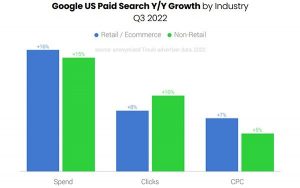Why more and more organizations are adopting the slow work movement
Productivity isn’t always about getting things done as quickly as possible
BY Rachel Karl
We live in a world that reveres speed and worships breadth over depth. But a quiet revolution is brewing, and it’s called the slow movement (or specifically, the slow work movement). It’s gaining traction in the business world, especially among those looking for a sustainable path to success.
As our understanding of productivity evolves, more and more people are questioning the notion that “faster is better.” This shift towards a slower, more deliberate pace of work isn’t just a personal preference but a strategic move for many innovative companies. This movement aligns closely with the growing emphasis on mental health and wellness in the workplace and points towards a future where there’s a greater value on quality of work—and life—over mere output.
Reevaluating the idea of efficiency
The old-school idea that being busy means you’re productive comes from way back in the industrial capitalism days, when all that mattered was how much you could churn out, and nobody really cared about the toll it took on people.
But this approach doesn’t always translate to success in today’s corporate setting. Companies leading the slow movement are discovering that by reducing the rush, they’re not only enhancing the well-being of their employees but also improving their bottom line.
One example of this is Basecamp, a Chicago-based project management and team communication software company that has been known for its innovative approaches to work culture, particularly its stance on work-life balance. They implemented a 32-hour workweek during the summer months back in 2008 without reducing pay, promoting a work environment that prioritizes rest and renewal.
Sustainability as strategy
The slow work movement is also intertwined with sustainability. This isn’t just about environmental impact—though that’s certainly a significant part of it—but also about building businesses that are sustainable in the long-term from a human perspective. Companies like Patagonia and Eileen Fisher have long been advocates for sustainable practices not only in how they source their materials, but also in how they encourage their employees to work.
These companies know that to sustain innovation and passion, they need to allow employees to manage their energy. They need to foster environments that encourage workers to take time off to recharge, pursue side projects, or volunteer, which leads to higher overall productivity and loyalty.
The emphasis on quality over quantity
The slow movement also emphasizes quality over quantity, a principle that applies to both manufacturing and service industries. In manufacturing, this can mean opting to produce goods that are durable and repairable rather than disposable. In the service sector, it translates into providing thoughtful, personalized services rather than boilerplate solutions.
Consider the consultancy firms that have shifted from measuring success by billable hours to a focus on the outcomes achieved for clients. Not only does this result in more satisfied customers, but also in employees who find greater meaning in their work because they no longer have to rush.
Many business owners might fear this could lead to less profits. But the HR Locker podcast reported that The Wanderlust Group, which switched to a permanent 32-hour workweek in July 2020, opted to take Mondays off instead of the more common Friday. The company has doubled its revenue since making this change—exemplifying the positive impact of the shorter workweek.

The human cost of constant connectivity
Perhaps one of the most critical aspects of the slow work movement is its challenge to our always-on culture. The expectation for workers to be constantly available, answering emails at all hours and jumping from task to task has been detrimental to both personal well-being and overall job performance.
By establishing boundaries around work hours and encouraging practices such as digital detoxes, companies are recognizing that constant connectivity is counterproductive. Employees perform better when they don’t have the expectation of being constantly offline, and are encouraged to disconnect and recharge when they need it. This recognition is gaining ground as research continues to highlight the benefits of disconnection on mental health and productivity.
The slow movement as future of work
As we look to the future it seems like the principles of the slow work movement will define the next wave of work culture. To be clear, this isn’t about working less, it’s about working better. It’s about companies caring for the resources they most depend on—not just their intellectual property or corporate capital, but their human employees.
Leaders who understand the value of this movement are implementing slow principles by redesigning work processes to be more intentional, promoting sustainability in all its forms, and recognizing that they need to consider employee well-being in order to have long-term success.
What’s clear is that the future of work may very well hinge on who can work the fastest, but also who can work the smartest. Embracing the slow work movement could be the key to unlocking a healthier, more sustainable, and more fulfilling path to success. This approach doesn’t just benefit individuals but can propel entire organizations towards a more prosperous, less stressful future.
ABOUT THE AUTHOR
(16)
Report Post





